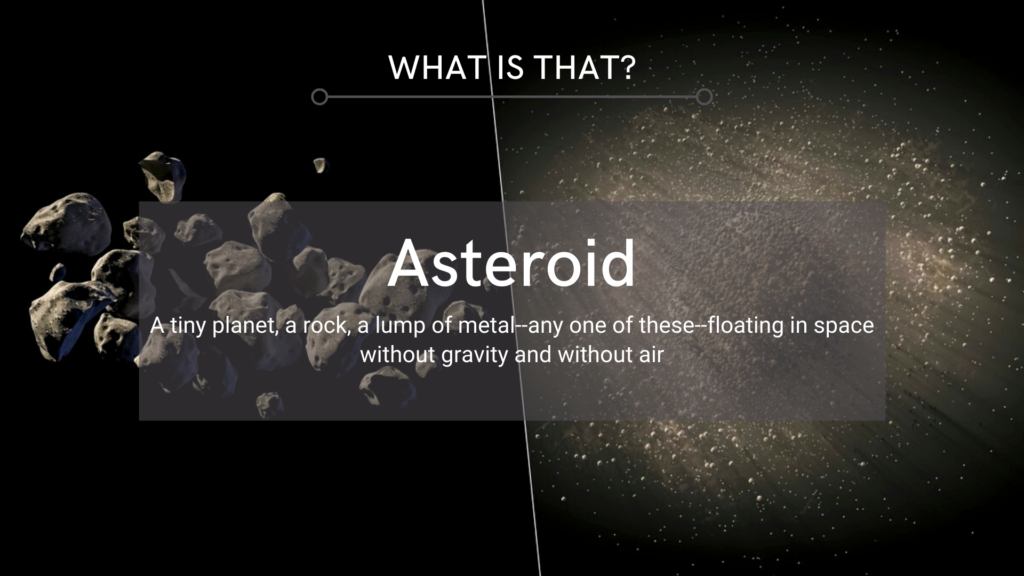
Asteroid – lump of rock or metal that orbits the sun
An asteroid, a word also meaning “like a star,” is a lump of rock or metal–and sometimes ice–that orbits the sun. Some orbit the sun directly, some orbit other planets, and some orbit our entire solar system.
Asteroid Belt
What is the Asteroid Belt and where is it located?
Millions of asteroids orbit the sun just like the Earth and the planets do. Most of the asteroids scientists have found are located in the Main Asteroid Belt, which is a band of asteroids 140 million miles wide. The Main Asteroid Belt starts just outside the orbit of Mars and is well inside the orbit of Jupiter, which is the next planet out from Mars.
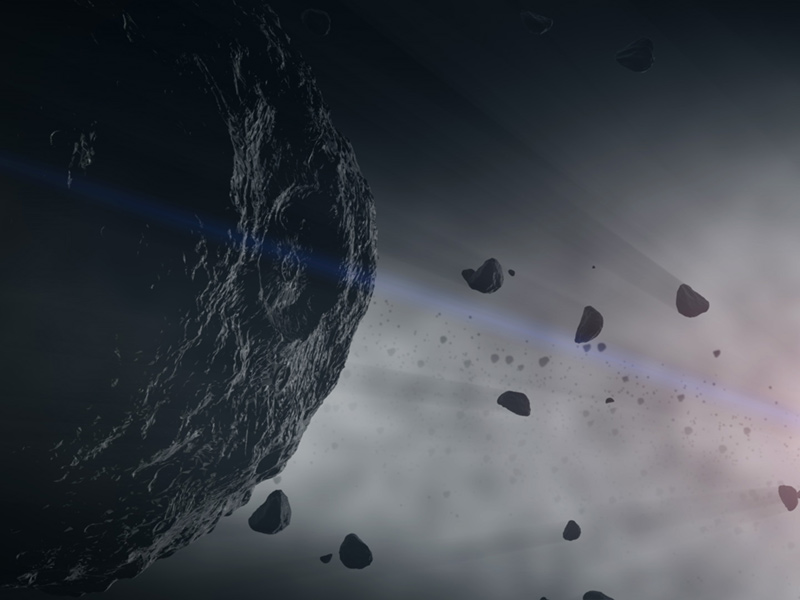
See an amazing image of the Main Asteroid Belt here at Space.com. (The Main Asteroid Belt is shown in green.)
If you have ever seen a model of the solar system, you know the eight planets all travel in the same plane around the sun. Their orbits–the paths they take–look like a disc (or flat plate) of rings around the sun. The Main Asteroid Belt creates a thick ring on this same plane, like its part of the same disc or plate. The asteroids in the Main Asteroid Belt also travel in the same direction around the sun as all the planets of our solar system.
What are asteroids made of?
Most asteroids in the Asteroid Belt are made of rock. Some asteroids are made of metal–mostly iron and nickel. These metal asteroids are shiny and reflect the sun’s light. Some asteroids are made of a mix of rock and metal. And some more distant asteroids are made of ice. Some asteroids may even contain ice made from water, which could be useful to support astronauts if we colonize the Asteroid Belt.
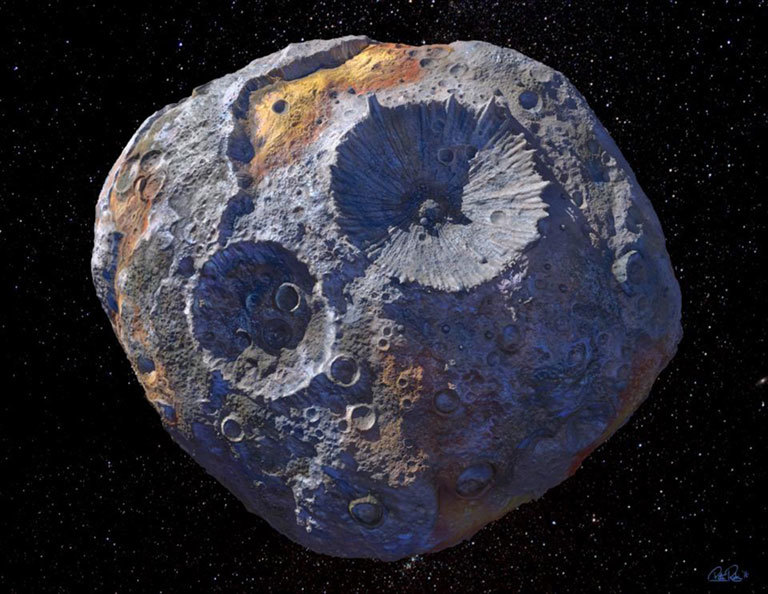
Some asteroids are solid. Some asteroids are just “piles of rubble held together by gravity,” according to an article by Nola Taylor Redd on Space.com. “Most asteroids aren’t quite massive enough to have achieved a spherical shape and instead are irregular, often resembling a lumpy potato.”
How big are asteroids?
Asteroids range from the size of specks of dust to moonsize. The largest asteroid in the Asteroid Belt is the dwarf planet Ceres. It is almost 590 miles across (diameter). That is small compared to Earth’s moon, which has a diameter of 2,158 miles. But it’s much bigger than one of Mars’s moons, Deimos, which is only seven miles across.
Ceres comprises 25 percent of the mass in the Main Asteroid Belt.
There are a number of other asteroids that are 100 and 200 miles long.
What about other asteroids?
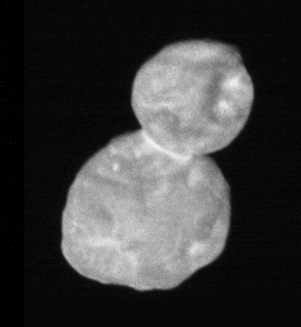
Beyond Neptune is an even wider ring of asteroids called the Kuiper Belt. The Kuiper Belt includes the dwarf planet Pluto, which astronomers once used to count among the nine planets in our solar system. There is even a snowman-shaped asteroid in the Kuiper Belt named Arrokoth.
NASA has a great interactive web page dedicated to the Kuiper Belt.
Eros
The asteroid Eros has made history both in astronomy and science fiction.
Discovery of Eros
Two astronomers discovered Eros independently on the same day, August 13, 1898–Gustav Witt in Berlin, Germany and Auguste H.P. Charlois in Nice, France. It was the first near-Earth asteroid ever discovered.
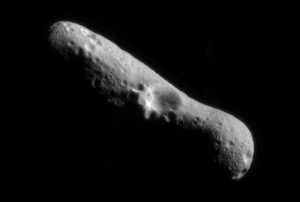
NASA’s visit to Eros
Eros was also the first asteroid on which we have landed a spacecraft. Eros, named after the Greek god of love, was first orbited by a spacecraft, the NEAR spacecraft, on Valentine’s Day, February 14, 2000. After nearly a year orbiting and studying Eros, the NEAR spacecraft landed on Eros on February 12, 2001.
Astronomers have also used Eros to determine the distance between the sun and the Earth and to determine the combined mass of Earth and the Moon.
See a NASA’s 3-D rendering of Eros that you can move and manipulate on your own screen.
Ender’s Game
Eros also entered the annals of Science Fiction in the novel Ender’s Game, which won both the Hugo and Nebula awards.
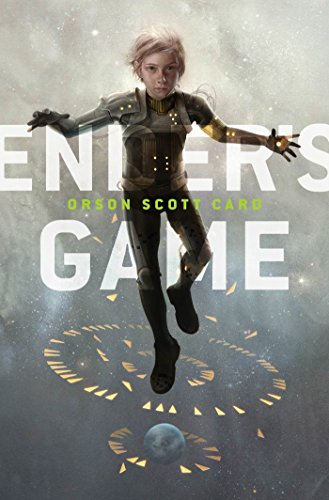
In Ender’s Game, the hero Ender Wiggin travels to the asteroid Eros, which has been turned into I.F. Command, a military base and training center, to finish his military training.
“The tug reached Eros before they could see it. The captain showed them the visual scan, then superimposed the heat scan on the same screen. They were practically on top of it–only four thousand kilometers out–but Eros, only twenty-four kilometers long, was invisible if it didn’t shine with reflected sunlight.”
“The captain docked the ship on one of the three landing platforms that circled Eros. It could not land directly because Eros had enhanced gravity, and the tug, designed for towing cargoes, could never escape the gravity well.”
. . . .
“Ender hated Eros from the moment he shuttled down from the tug. He had been uncomfortable enough on Earth, where floors were flat; Eros was hopeless. It was a roughly spindle-shaped rock only six and a half kilometers thick at its narrowest point. Since the surface of the planetoid was entirely devoted to absorbing sunlight and converting it to energy, everyone lived in the smooth-walled rooms linked by tunnels that laced the interior of the asteroid. The closed-in space was no problem for Ender–what bothered him was that all the tunnel floors noticeably sloped downward. From the start, Ender was plagued by vertigo as he walked through the tunnels, especially the ones that girdled Eros’s narrow circumference. It did not help that gravity was only half of Earth-normal–the illusion of being on the verge of falling was almost complete.
[E]veryone lived in the smooth-walled rooms linked by tunnels that laced the interior of the asteroid.
Ender’s Game
“There was also something disturbing about the proportions of the rooms–the ceilings were too low for the width, the tunnels too narrow. It was not a comfortable place.”
By the end of Ender’s Game, we learn the secret of the unusual construction of the base inside Eros. But I won’t spoil author Orson Scott Card’s surprise. So read Ender’s Game and find out for yourself.
Design your own asteroid!
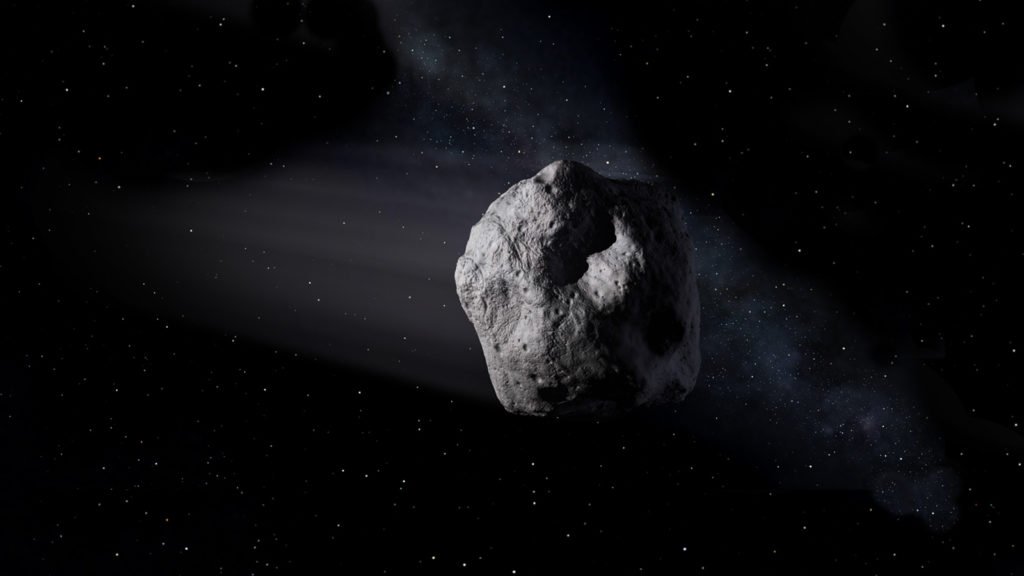
As we’ve seen, asteroids can be any shape you want. What shape would you make your asteroid? Would you create a military base or a shopping mall inside it? Or would you make a theme park or a factory on the outside?
Would you add your own gravity–like I.F. Command did in Ender’s Game? Or would you let visitors enjoy the fun of zero-grav?
What would you name your asteroid?
Please post your comments below.
Be stellar!
Matthew Cross


